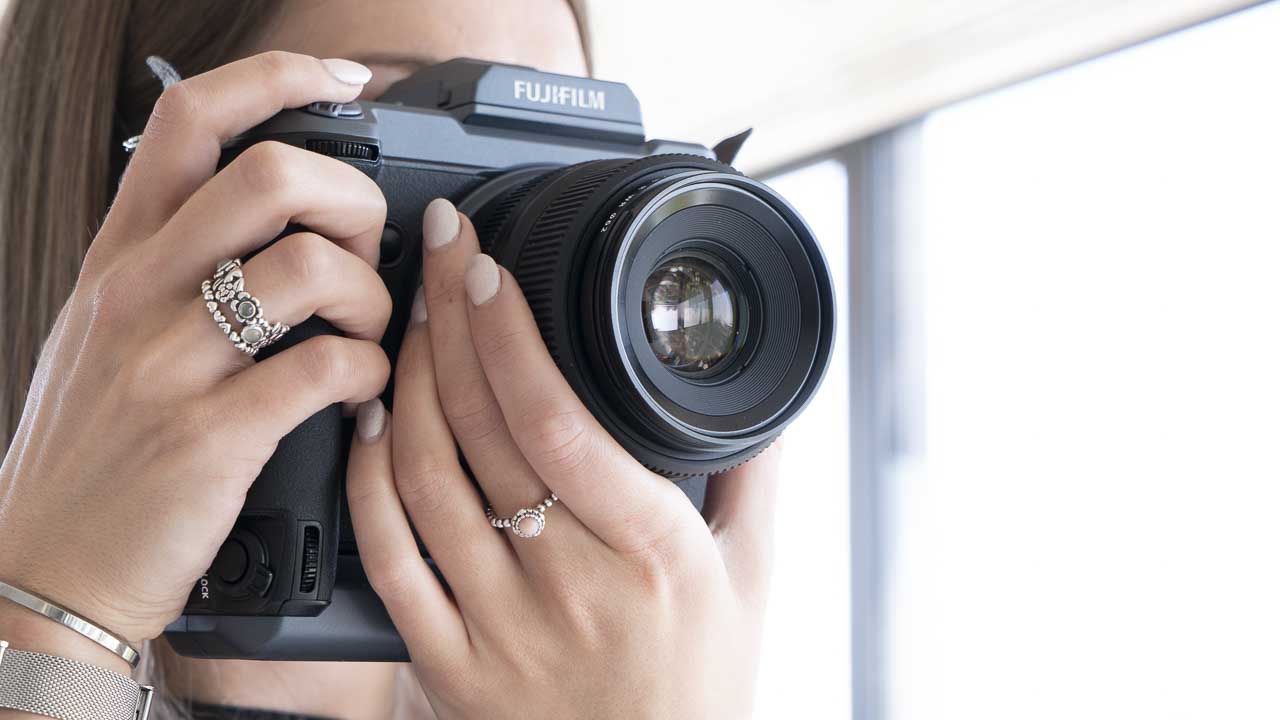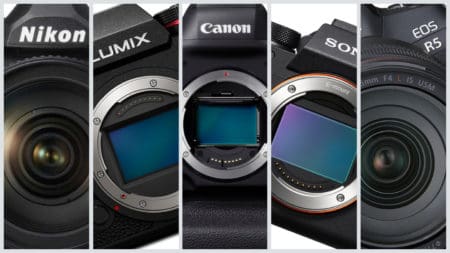The best image quality cameras are not cheap. Let’s just get that out of the way first. If you’ve come to this page looking for the best picture quality camera on a tight budget, you’ll need to settle for something with a smaller sensor, or perhaps an older flagship camera like those we recommended in our guide to the best professional cameras for beginners.
But if you’re prepared to spend the money, the best image quality camera for your needs will be among those on the list below. To get the best image quality you’ll want a full-frame sensor at a minimum, and possibly even a medium format sensor.
The size of your camera’s sensor is important because it directly affects image quality. If you have two cameras with the same pixel count, the one with the physically larger sensor will produce better quality images. This is due to the fact that the pixels are bigger on the larger sensor.
Pixels, or photo receptors, exist to collect light. The larger they are, the more light they can capture and convert into a digital image signal.
But, as you might imagine, being the technologically complex chips that they are, image sensors are the most expensive component of a camera to produce. So when you’re looking to buy the best camera for image quality, you’re going to pay a premium.
For a more in-depth look at sensor design and what impacts picture quality, check out our guide on understanding sensor size in photography. Otherwise, read on to find the best image quality camera for your system.
Don’t miss our guides to the best cameras for professional photographers and best professional DSLR cameras where you’ll find some of the cameras we’ve listed below, but other options, as well, where you can still get great image quality while perhaps making a few compromises on other specifications.
Cameras with the best picture quality
A quick note on how we selected our list of the best cameras for image quality. We based our grouping on cameras with high-resolution sensors, not cameras like Olympus’s Micro Four Thirds OM-D line that uses pixel shift technology to combine mulitple images for a higher-resolution output. Granted, some of the cameras on the list below, like the Fujifilm GFX cameras, have this pixel shift technology, but even without using this feature they are capable of producing 102-megapixel images. For more on pixel shift, see our guide to which cameras have pixel shift.
For a deeper dive into the many different camera types and features available, check out our range of camera buying guides.
Sony A7R IV
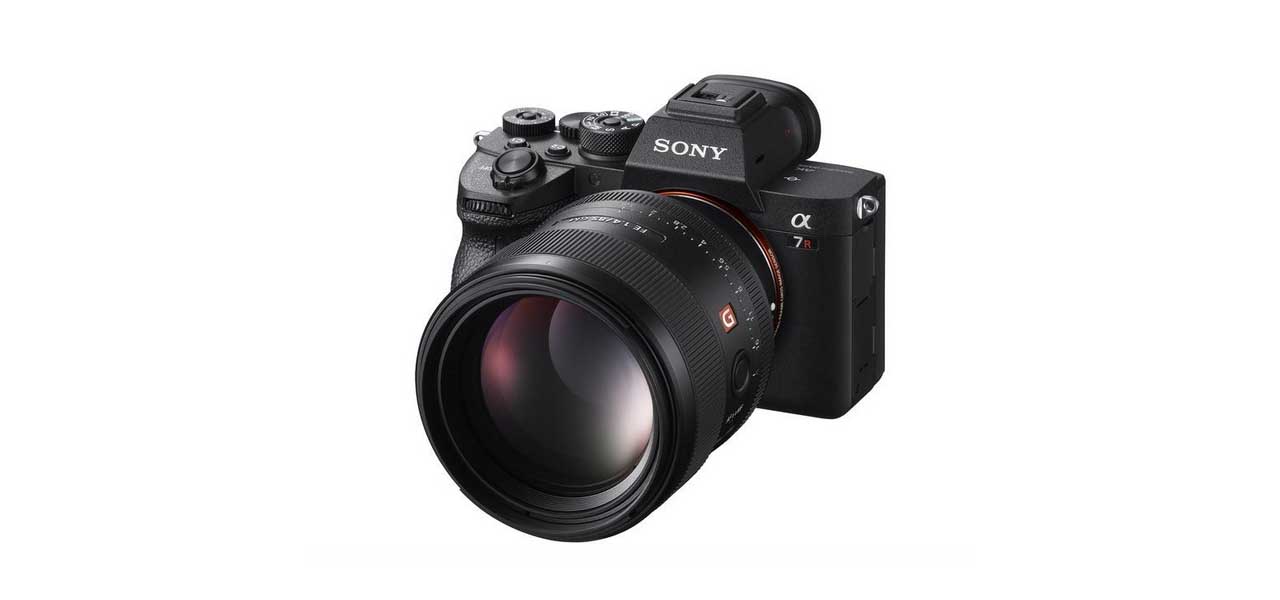
Specification
- Camera type: Full-frame mirrorless
- Announced: 16th July 2019
- Sensor: 61MP BSI full-frame sensor
- Lens mount: Sony FE
- Autofocus system: Hybrid with 567 phase detection + 425 contrast detection AF points
- Continuous Shooting: 10fps burst shooting with full AF / AE Tracking
- Video: 4K video with S-Log2/3, HDR
- Sensitivity range: Still images: ISO 100-32000 (expandable to ISO 50 to ISO 102400) Movies: ISO 100-32000
- Viewfinder: 0.5 type 5,760,000-dot OLED
- Screen: Tilting 3-inch 1,440,000-dot touchscreen
- Storage: 2x SD/SDHC/SDXC UHS-II
- Battery: Rechargeable NP-FZ100 battery supplied, Life Stills: 530 shots (viewfinder) / 670 shots (LCD), Movies: 90mins (viewfinder) / 105mins (LCD)
- Dimensions (WxHxD): 128.9 x 96.4 x 77.5mm
- Weight: 665 g / 1lb 7.5oz with battery and SD card
The Sony A7R Mark IV’s 61-million-pixel 35mm sensor is a world first, which the company says delivers ‘medium format quality’.
The sensor is back-side illuminated, and it provides 15 stops of dynamic range. As well as 61-megapixel images, the Sony A7R Mark IV can also produce images with 26 million pixels in APS-C crop mode.
What’s more, its revampled Pixel Shift Multi-Shooting mode can produce images at 240-megapixel resolution. It does this by capturing 960 megapixels worth of data from 16 images, which it then composites together using Sony’s Imaging Edge software.
The A7R Mark IV boasts 567 phase-detection AF points in full-frame mode, which cover 74% of the frame. In the camera’s APS-C mode it has 325 AF points which then cover nearly the entire frame. There’s also Sony’s excellent AI-driven Real-time Eye AF (for humans and animals ins stills mode) and Real-time Tracking modes, which is invaluable for portrait, wedding, sport, pet and social photography.
Depsite its high resolution, the Sony A7R IV is also built for speed and can capture full-resolution 61-megapixel images in continuous shooting mode at up to 10fps, and up to 68 images per continuous burst.
Also among its key features is 5.5-stop, 5-axis in-body image stabilisation, wireless tethering capability, faster USB connection, 802.11ac Wi-Fi plus Bluetooth and studio lighting support.
It all adds up to make the Sony A7R IV one of the best cameras available right now.
Find the best deals on the Sony A7R IV at Amazon UK and Amazon US.
£3500
$3500For
- Superb detail resolution
- Excellent autofocus system
- High-resolution electronic viewfinder
Against
- Limited use made the touch-control
- Tilting rather than vari-angle scree
- High price
Canon EOS R5
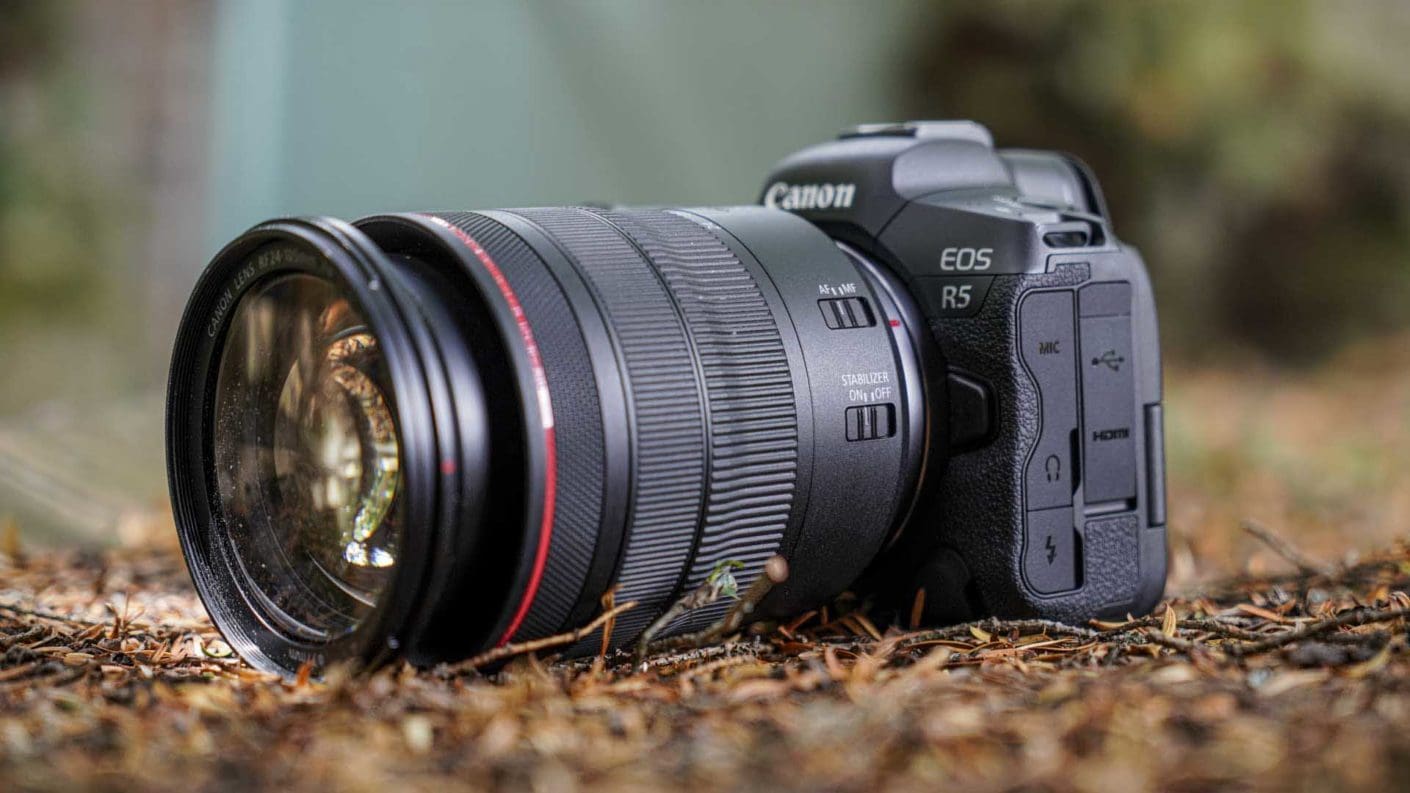
Specification
- Camera Type: Mirrorless
- Announced: 9th July 2020
- Sensor: 45Mp Full-frame Dual Pixel CMOS AF II
- Processor: Digic X
- Lens mount: RF
- Sensitivity range: Stills: ISO 100-51,200 expandable to ISO 50-102,400, Movies: ISO 100-25600, expandable to ISO ISO 51,200
- Metering: 384-zone metering with Evaluative metering (linked to All AF points), Partial metering (approx. 6.1% of viewfinder at centre), Spot metering: Centre spot metering (approx. 3.1% viewfinder at centre), Centre weighted average metering
- Shutter speed range: 1/8000sec-30 seconds and Bulb
- File formats: Raw + Jpeg/HEIF, MP4
- Maximum continuous shooting rate: Mechanical shutter: 12fps, Electronic shutter: 20fps
- Maximum video resolution: Uncropped, internal raw recording 8K video at up to 29.97fps in 4:2:2 10-bit in Canon Log (H.265) or 4:2:2 10-bit HDR PQ (H.265), Uncropped internal recording 4K video at up to 119.88fps in 4:2:2 10-bit in Canon Log (H.265) or 4:2:2 10-bit HDR PQ (H.265) 4:2:2 10-bit in Canon Log or 4:2:2 10-bit HDR PQ, 4K output over HDMI at up to 59.94fps
- Autofocus system: Dual Pixel CMOS AF II phase detection with 5940 points in stills and 4500 points in movie mode
- Viewfinder: 0.5-inch 5.76million-dot OLED electronic viewfinder with 120fps display and 0.76x magnification
- Screen: 3.15-inch 2.1-million dot vari-angle touchscreen
- Autofocus: Dual Pixel CMOS AF II with Advanced Animal AF (recognising dogs, cats and birds) supported in all video modes with 100% coverage and up to 1053 'AF segments'
- Stabilisation: In-body image stabilisation (IBIS) that works with lens IS and enables up to 8-stops of shutter speed compensation
- Storage: Dual slots, 1x CFexpress, 1x SDXC UHS-II
- Dimensions: 135.8 x 97.5 x 88mm
- Weight: 650 g / 738 g with card and battery
Although its position was technically usurped by the Canon EOS R3, the Canon EOS R5 is Canon’s flagship mirrorless camera and it was the most exciting camera announced in 2020.
Its 8K video capability stole most of the headlines when it was revealed, but the Canon R5 is at heart a 45Mp stills camera with an incredible autofocus system. This Dual Pixel CMOS AF II system has 5,940 selectable AF points and superb eye detection AF for humans, animals and birds that works in both video and stills mode.
Like the Canon EOS R6 announced at the same time, the EOS R5 has 5-axis in-body image stabilisation. In the R5 it enables shutter speed compensation of up to 8EV.
Canon pitches the R5 at around the same level as the Canon EOS 5D Mark IV, which means it’s designed for use by experienced enthusiast and professional photographers. It combines a healthy collection of button and dial controls with an excellent touch-control interface on the 3.15-inch 2.1-million dot vari-angle screen.
While 8K video is of limited appeal, the R5 is capable of producing superb results with the 4K HQ (High Quality) mode especially impressing. The still image quality is also excellent all the way up to around ISO 25,600.
Find the latest deals on the Canon EOS R5 at Amazon UK and Amazon US.
£4199
$3899For
- 45Mp full-frame sensor with full AF coverage
- 12fps/20fps continuous shooting with continuous AF
- Uncropped internal 8K video recording for up to 20 minutes
Against
- 8K video will require lots of storage capacity
Nikon Z9

Specification
- Camera type: Full-frame mirrorless camera
- Announced: 28th October 2021
- Lens mount: Nikon Z
- Sensor: Full-frame (FX 35.9 x 23.9mm) 45.7MP stacked backside illuminated (BSI) sensor
- Processing engine: Expeed 7
- Stabilisation: 5-axis sensor shift giving 6EV shutter speed compensation
- Sensitivity: ISO 64-25,600, expandable to ISO 32-102,400
- Maximum continuous shooting rate: 20fps for up to 1000+ raw (high efficiency) files or 685 raw (high efficiency *) files, 30fps for up to 1000+ normal-quality Jpegs, or 120fps normal-quality 11Mp Jpegs
- Autofocus system: Hybrid with phase and contrast detection
- Phase detection points: 493
- AF-area modes: Pinpoint (available in photo mode only), single-point, dynamic-area (S, M, and L; available in photo mode only), wide-area (S and L), and auto-area AF, 3D-tracking (available in photo mode only), subject-tracking AF (available in video mode only)
- Video resolution: 8K (7680 x 4320): 30p (progressive)/25p/24p, 4K (3840 x 2160): 120p/100p/60p/50p/30p/25p/24p, Full HD (1920 x 1080): 120p/100p/60p/50p/30p/25p/24p
- Video file format: MOV, MP4
- Video compression: Apple ProRes 422 HQ (10 bit), H.265/HEVC (8 bit/10 bit), H.264/AVC (8 bit)
- Viewfinder: 0.5-inch 3.69-million-dot, 3,000-nit OLED viewfinder
- Screen: 3.2-inch 2,100,000-dot 4-way-tilting touch-screen
- Storage: Dual XQD/CFexpress
- Dimensions (W x H x D): 149 x 149.5 x 90.5 mm / 5.9 x 5.9 x 3.6 inches
- Weight: 1340 g / 2 lb. 15.3 oz.with battery and memory card but without body cap and accessory shoe cover, Body only: 1160g / 2 lb. 9 oz.
Although it has the same resolution as the Nikon Z7 II, the full-frame stacked CMOS sensor inside the Nikon Z9, which was designed by Nikon’s engineers, is new. It’s also paired with a new processing engine, the Expeed 7.
Together the new sensor and processor enable the Z9 to have a native sensitivity range of ISO 64-25,600 with expansion settings pushing the range to ISO 32-102,400. It also uses new advanced noise-reduction algorithms that are claimed to enable it to produce better results than the 45.7Mp Nikon Z7 II and Nikon D850.
There’s also a sensor-shifting 5-axis in-body image stabilisation (IBIS) system that offers up to 6EV shutter speed compensation.
Along with its high resolution, the Nikon Z9 also offers unprecedented speed. The camera can shoot full-resolution raw (high efficiency) files at up to 20fps with a burst depth of more than 1000 images. If you’re shooting JPEGs, this rate can be pushed to 30fps in the Z9’s C+ mode. Alternatively, the Z9 can shoot 11Mp normal-quality Jpeg images with full AF and exposure metering capability at 120fps.
There may be better image quality cameras than the Nikon Z9 on this list if you’re simply counting megapixels. But Nikon’s new flagship camera reaps all the benefits of mirrorless technology and has huge processing power, making it capable of capturing pin-sharp, fast-paced action as well as the finer details.
£5299
€6299For
- New 45.7Mp full-frame sensor sensor
- Advanced AF system
- Durable, weatherproof build
Against
- No mechanical shutter
- Firmware updates to come in 2022 to get the full video feature set
Fujifilm GFX 100

Specification
- Camera type: Medium format mirrorless
- Announced: June 2019
- Phase detection AF points: 3.67m
- Sensor: 102Mp Medium format (43.8 x 32.9mm) CMOS with Bayer colour filter array
- Lens mount: Fujifilm G
- Autofocus system: Intelligent Hybrid AF (contrast AF / phase-detection AF) with up to 425 selectable AF points
- Viewfinder: 0.5-inch 5.76million-dot OLED
- Screen: 3-direction tilting 3.2-inch 2.36million-dot touchscreen
- Continuous Shooting: 10fps for up to 58 Jpeg and 25 raw files with UHS-II card with the viewfinder. In Live view mode, up to 11fps with One-Shot AF or 7fps with Servo AF
- Sensitivity range: Stills: ISO 100-12,800 expandable to ISO 50-102,400, Video: ISO 200-12,800 expandable to 50-25,600
- Max video resolution: 4K (4096×2160) 29.97p / 25p / 24p / 23.98p 400Mbps/200Mbps/100Mbps up to Approx. 60min.
- Storage: SD/SDHC/SDXC UHS-II
- Dimensions: 156.2mm x 163.6mm x102.9mm (inc EVF)
- Weight: 1,400g including EVF, 2x battery & memory card
The Fujifilm GFX100 was Fujifilm’s third digital mirrorless medium format camera and the first to feature a 102Mp sensor. It was also the first-ever medium format camera to feature in-body image stabilisation (IBIS).
Astonishingly, a firmware update introduced Pixel Shift Multi Shot mode which enables the GFX100 to shoot a sequence of 16 images which are then composited into one 400Mp image using Fujifilm’s free Pixel Shift Combiner software to create a 400Mp image.
Although the GFX100’s sensor has a Bayer pattern colour filter array, it otherwise uses the same technology as the sensor in the Fujifilm X-T3. That means it has Fuji’s Intelligent Hybrid AF system that combines contrast detection with phase detection. What’s more, the phase-detection points cover virtually the whole frame and there up to 425 points available for selection.
Like Fujifilm’s X-Series cameras, the Fuji GFX 100 has Single point, Zone AF and Wide/Tracking AF options. In Single Point AF mode the focus point array can be switched between a 13×9 (117) and 25×17 (425) grid of points. There are also 6 sizes of AF point available. Similarly, in Zone AF mode the size of the zone can be changed so it covers 3×3, 5×5 or 7×7 of the 117 areas on a 13×9 grid.
Also, the customisation options that are available in cameras like the X-T3 are available on the GFX 100 in continuous autofocus (AF-C) mode.
In addition, Fujiifilm has improved the Face & Eye detection and tracking. Plus, it’s possible to switch between the detected faces to ensure the right target is used for focusing.
Thanks to the new sensor design and processor, Fujifilm is claiming a 500% improvement in the AF performance in comparison with the GFX 50S.
£9999
$9999.95For
- Stunning images
- Excellent autofocus system
- Superb stabilisation system
Against
- The vertical grip could be better-shaped and offer more purchase
- Doesn't have all the traditional exposure controls of cameras like the Fujifilm X-T3
- High price
Fujifilm GFX100S
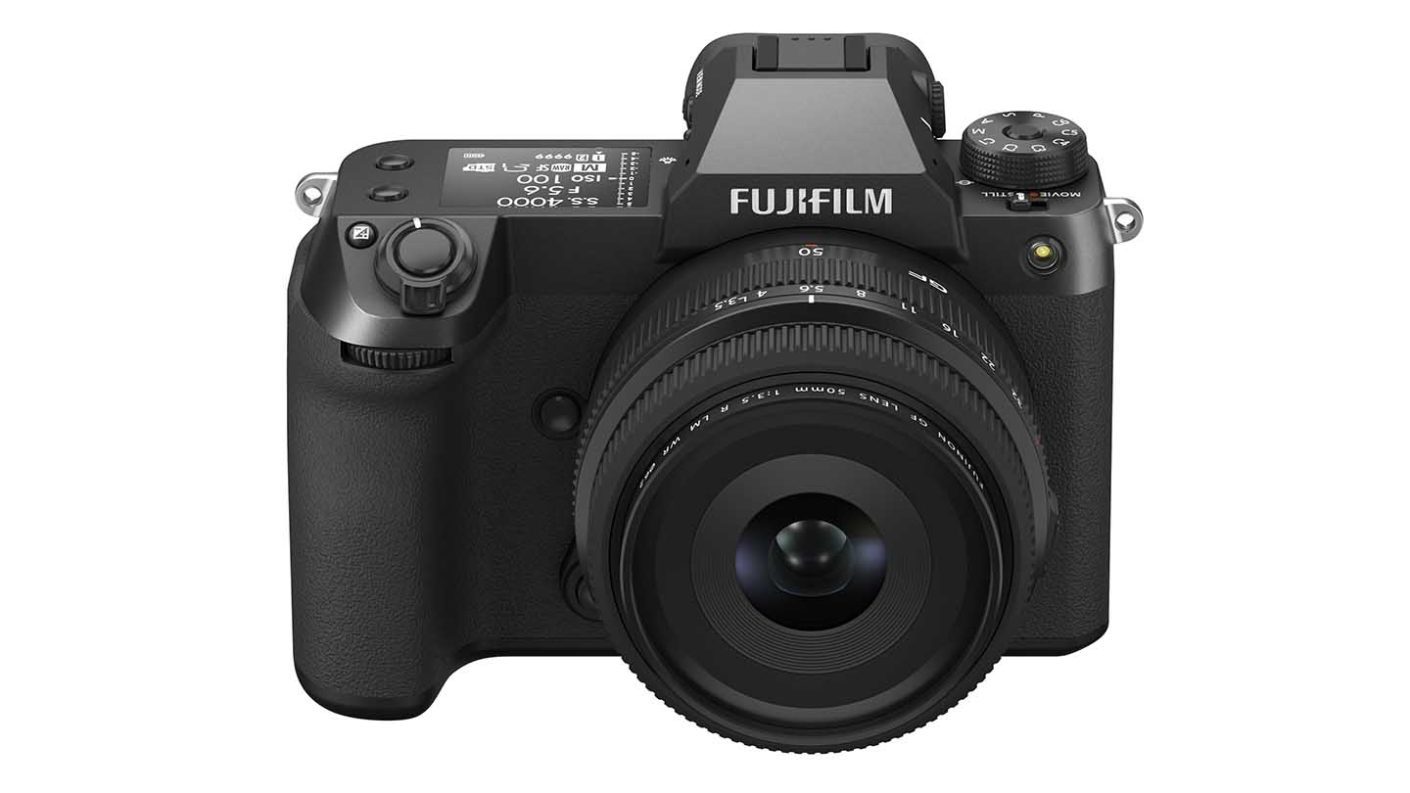
Specification
- Camera type: Medium format mirrorless
- Announced: 27th January 2021
- Sensor: 102Mp Medium format (43.8 x 32.9mm) CMOS with Bayer colour filter array
- Maximum image size: 11648 x 8736
- Processor: X Processor 4
- Lens mount: Fujifilm G
- Autofocusing: Intelligent Hybrid with up to 425 AF points
- Autofocus system: Intelligent Hybrid AF (contrast AF / phase-detection AF) with up to 425 selectable AF points
- Viewfinder: Fixed 0.5-inch 3.69million-dot EVF with 0.77x magnifications 85fps
- Screen: 3-direction tilting 3.2-inch 2.36million-dot touchscreen
- Continuous Shooting: 5fps for 42Jpegs, 16 compressed raw, 15 lossless compressed raw or 14 uncompressed raw
- Sensitivity range: Standard ISO 100-12,800, expandable to ISO 50-102,400
- Image stabilisation: In-body 5-axis giving 6EV compensation, Plus Digital IS and IS Boost for video
- Max video resolution: 4K (4096×2160) 29.97p 400Mbps up to 120min recording, Digital IS (1.1x crop), F-Log, HLG, ProRes Raw (12-bit HDMI)
- Film Simulation Modes: 19 modes: Provia/Standard, Velvia/Vivid, Astia/Soft, Classic Chrome, Pro Neg.Hi, Pro Neg.Std Classic Neg., Nostalgic Neg., Eterna/Cinema, Eterna Beach Bypass, Acros, Acros + Ye Filter, Acros + R Filter, Acros + G Filter, Black & White, Black & White + Ye Filter, Black & White + R Filter, Black & White + G Filter, Sepia
- Storage: SD/SDHC/SDXC UHS-II
- Battery: NP-W325 460 images
- Dimensions: 150 x 104 x 44mm
- Weight: 900g including battery and card
The Fujifilm GFX100S is a medium format camera that doesn’t feel like a medium format camera. With the right lens, it can blend in with full-frame DSLR and mirrorless camera yet it has a sensor that’s 1.7x the size.
It has the same 102Mp back-illuminated CMOS sensor as the Fujifilm GFX100, which means it can produce images that measure 98.62 x 73.96cm or 38.8 x 29.1-inch when printed at 300ppi. And there’s Fujifilm’s Pixel Shift Multi Shot mode that enables it to produce 400Mp images with a little help from a computer running Fujifilm’s Pixel Shift Combiner software.
If you look at images shot at the top native sensitivity setting of ISO 12,800 at 100% on screen, you’ll see a fair amount of luminance noise in the raw files, but as you zoom out, it disappears and there’s a long way to zoom out! Of course it depends what you want to do with your images, the the Fujifilm GFX100S is one of the few cameras that we’d feel reasonably happy about using the upper sensitivity expansions settings.
While the GFX100S’s AF system is a bit fidgety, it’s responsive and can get moving subjects sharp. The Eye AF isn’t the best around, but it’s useful for portraits and the level of detail captured in low to mid-range ISO images is fantastic.
£5499
$5999 / €5999For
- Superb sensor
- Phase detection autofocus system
- Small for medium format
Against
- Doesn't have all the traditional exposure controls of the GFX 50S
- The eye AF isn't very assured
Fujifilm GFX 50S II

Specification
- Camera type: Medium format mirrorless
- Announced: 2nd September 2021
- Sensor: 51.4Mp Medium format (43.8 x 32.9mm) CMOS with Bayer colour filter array
- Maximum image size: 8256 x 6192
- Processor: X Processor 4
- Lens mount: Fujifilm G
- Autofocusing: Contrast detection with Contrast Rapid AF and up to 425 user-selectable points
- Viewfinder: Fixed 0.5-inch 3.69million-dot EVF with 0.77x magnifications 50fps
- Screen: 3-direction tilting 3.2-inch 2.36million-dot touchscreen
- Maximum continuous shooting rate: 3fps
- Sensitivity range: Standard ISO 100-12,800, expandable to ISO 50-102,400
- Image stabilisation: In-body 5-axis giving 6.5EV compensation
- Max video resolution: Full-HD (1920 x 1080) 4:2:0 8-bit
- Film Simulation Modes: 19 modes: Provia/Standard, Velvia/Vivid, Astia/Soft, Classic Chrome, Pro Neg.Hi, Pro Neg.Std Classic Neg., Nostalgic Neg., Eterna/Cinema, Eterna Beach Bypass, Acros, Acros + Ye Filter, Acros + R Filter, Acros + G Filter, Black & White, Black & White + Ye Filter, Black & White + R Filter, Black & White + G Filter, Sepia
- Storage: Dual SD/SDHC/SDXC UHS-II
- Battery: NP-W325, life of455 images
- Dimensions: 150 x 104 x 44mm
- Weight: 900g
Announced in September 2016, the Fujifilm GFX 50S was Fuji’s first medium format mirrorless camera. Since then we’ve seen the GFX50R, GFX100 and GFX100S. At each step of the way, Fujifilm has focused on making its mirrorless medium format range lighter and more affordable, yet not compromising on image quality. And when you compare the sensors and price tags of Fujifilm’s GFX series cameras vs many of the others on this list, it’s clear that they should be on your shortlist when choosing the best image quality camera.
While the Fujifilm GFX50S has the same 51.4Mp (43.8 x 32.9mm) sensor as the GFX50S, it’s paired with a more modern processing engine, the X Processor 4. This enables improved low light performance, boosted dynamic range, in-body image stabilisation (IBIS) that gives up to 6.5EV of shutter speed compensation and high-resolution Pixel Shift Multi Shot mode.
In Pixel Shift Multi Shot mode the camera shoots 16 images in short succession with the sensor moving by a tiny amount between each capture. The images can then be composited on a computer running Fujifilm’s Pixel Shift Combiner software to create a 205Mp image. The interval between each of the 16 shots can be set to the ‘shortest possible’ or 1, 2, 5 or 15 seconds.
It would be easy to assume that the Fujifilm GFX50S will produce the same image quality as the original GFX50S, but the presence of a new processing engine has an impact. In our test of the camera, we found noise was very well-controlled at up to ISO 6400, and even ISO 12,800 images looked really nice when viewing at 100%.
As Fujifilm’s most affordable medium format camera, the GFX50S II has to make some compromises upon the GFX100S and GFX100 above it in the line up. However, it doesn’t compromise on image quality and will deliver superb images in a range of conditions.
£3499
$3999 / €3999 / £3899 / $4499 / €4499For
- 43.8 x 32.9mm sensor
- Compact for medium format
- Weatherproof
Against
- Contrast detection AF
- Laggy (but high-resolution) viewfinder
Panasonic S1R

Specification
- Camera type: Full-frame mirrorless
- Announcement: 1st February 2019
- Sensor: 47.3MP full-frame (36x24mm)
- Aspect Ratios: 2:3, 4:3, 1:1, 16:9, 2:1 and 65:24
- Sensitivity range: ISO 100-25,600, expandable to ISO 50-51,200
- Video: 4K (3840×2160) at 60fps and 150Mbps
- 6K Photo / 4K Photo: 6K PHOTO: 30 frames/sec 4K PHOTO: 60 frames/sec, 30 frames/sec, Extracted image format: Jpeg
- Maximum continuous shooting rate: Mechanical shutter: AFS/MF: H: 9 frames/sec, AFC: H: 6 frames/sec , Electronic shutter: AFS/MF: H: 9 frames/sec, AFC: H: 5 frames/sec
- Stabilisation: Dual IS 2 to 7EV compensation
- Viewfinder: 5,760,000-dot OLED
- Screen: 3.2-inch 2,100,000-dot triaxial tilt touchscreen
- Autofocus system: Contrast detection with 225 areas, Auto Detection (Face, Eye, Body, Animal)
- Storage: Dual ports: XQD/CFexpress and SD/SDHX/SDXC UHS-II
- Dimensions (HxWxD): 110x148.9x96.7mm
- Weight: 1016g
The Panasonic S1R has a sensor with an effective pixel count of 47.3 million. Unlike Panasonic’s G-Series Micro Four Thirds cameras which have a native aspect ratio of 4:3, the S1R’s 36x24mm sensor is a 3:2 device. However, there are also aspect ratio settings of 4:3, 1:1, 16:9, 2:1 and 65:24 should you want them.
Given the high pixel count of the Panasonic S1R in comparison with the S1, it’s no surprise to find it has a more limited sensitivity range. The standard range is ISO 100-25,600, and there are expansion settings to take it to ISO 50-51,200. That upper value is the same as the Lumix S1’s highest native setting.
Panasonic is aiming the Lumix S1R at professional photographers who want a high-resolution camera. For many, the 47Mp resolution is likely to be enough, but like the Panasonic S1 and Panasonic G9, the Lumix S1R also has a High Resolution mode.
When this is mode is activated, the camera shoots a series of eight images in quick succession. Using the in-body stabilisation mechanism, it moves the sensor a fraction between each shot. The camera then merges the images to create one much larger raw file.
When the aspect ratio is 3:2, using High Resolution Mode results in 16,736 x 11,186-pixel images. That means the images have 187million pixels! At 300ppi this enables you to create 141.7 x 94.56cm (55.787 x 37.227-inch) prints.
The Lumix S1R is an advanced camera with plenty of customisability and a dual-tilting touchscreen. There’s also a class-leading electronic viewfinder, and a nippy AF system. And, despite the already high pixel count, there’s a High Resolution mode that produces 187Mp images that are superb but challenging for computers.
It’s a complex camera, but well thought out and capable of producing superb results. Also, it sets a new benchmark for electronic viewfinders, with a super-smooth, high-detail view. And while the screen may not flip out for viewing from the front, its robust hinges allow it to tilt horizontally and vertically. This makes it useful for all sorts of photography as well as shooting video.
Naturally, the main reason for investing in a 47Mp camera is to produce images with lots of detail. The Panasonic Lumix S1R certainly delivers on this score. If you want to take things up a notch, there’s the High Resolution mode.
£2899
$3698For
- Robust build
- High-quality high-resolution images
- Excellent handling with lots of customisation
Against
- Big for a mirrorless camera
- AF system not as dependable as some
- Currently limited lens range
Nikon Z7 II
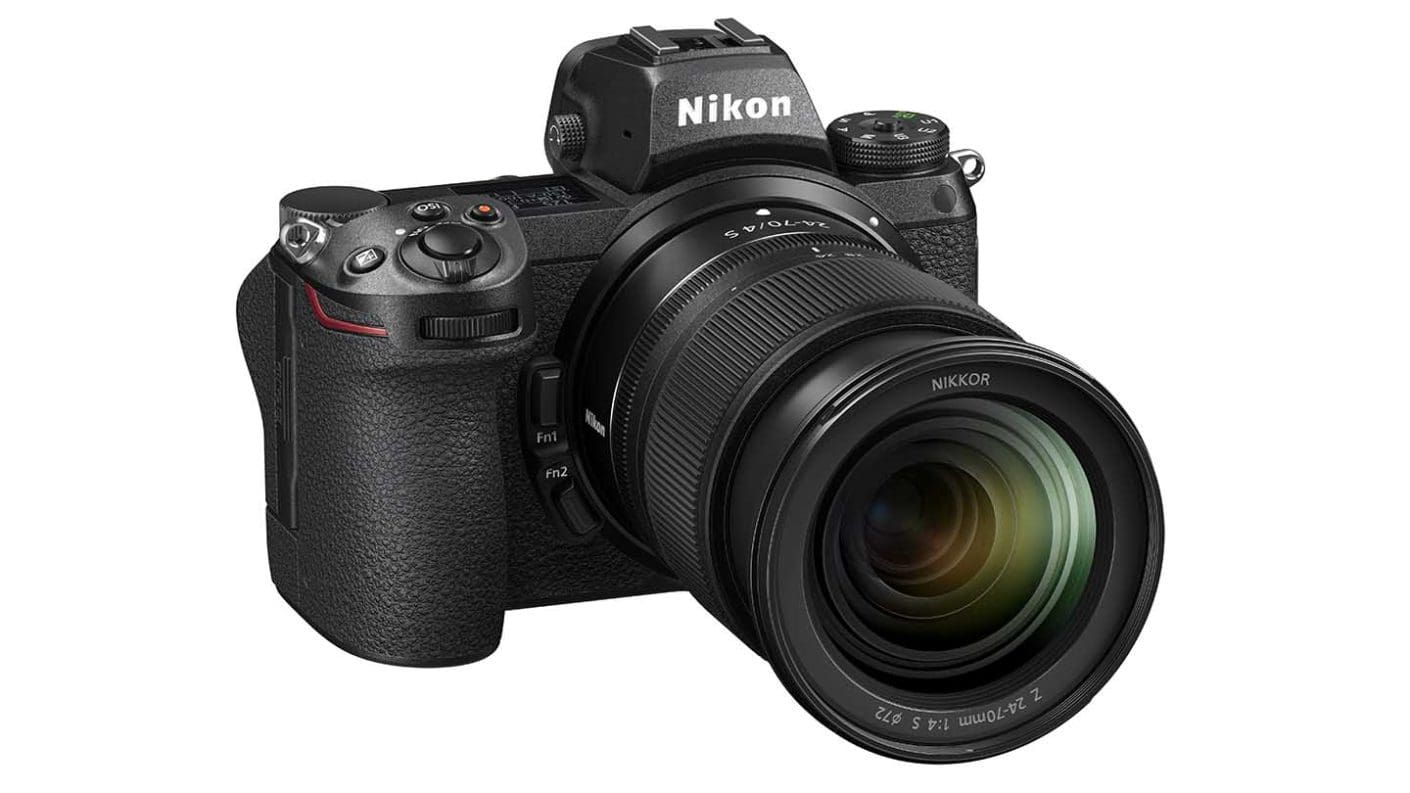
Specification
- Camera type: Full-frame mirrorless camera
- Announced: 14th October 2020
- Lens mount: Nikon Z
- Sensor: Full-frame (FX 35.9 x 23.9mm) 45.7MP backside illuminated (BSI) sensor
- Processing engine: Dual Expeed 6
- Stabilisation: 5-axis in-body VR
- Sensitivity: ISO 64-25,600, expandable to ISO 32-102,400
- Maximum continuous shooting rate: 10fps for up to 200Jpegs or 77 12-bit uncompressed raw files, 9fps with 14-bit raw files
- Autofocus system: Hybrid with phase and contrast detection
- Phase detection points: 493
- Video resolution: 4K (3840 x 2160) 60/50/30/25/24p, Full-HD (1920 x 1080) 120/100/60/50/30/25/24p, Slow-motion mode 1920 x 1080 30p x4/25p x4/24p
- Viewfinder: 0.5-inch 3.69-million-dot electronic viewfinder
- Screen: 3.2-inch 2,100,000-dot tilting touch-screen
- Storage: Dual slot 1 XQD/CFexpress and 1 SD/SDHC/SDXC
- Dimensions (W x H x D): 134 x 100.5 x 69.5mm / 5.3 x 4 x 2.8-inches
- Weight: 705g with battery and memory card but without body cap, 615g body only
While the 45.7Mp Nikon Z7 II has a lot in common with the excellent Nikon Z7 and uses much of the same technology (including the same sensor), the mark II camera has a second memory card slot which means it addresses the main concern that photographers had about the original camera. One slot accepts XQD or CFexpress cards while the other is for SD-type cards and is UHS-II compliant
Nikon also doubled the Z7 II’s processing power in comparison with the Z7 II by giving it two Expeed 6 processing engines. This enabled a boost in the continuous shooting rate from 9fps to 10fps and enables 4K shooting at 60P.
That extra processing power also enables Eye-detection AF for humans and animals in video mode as well as stills, and enhances the low-light capability of the autofocus system.
The Nikon Z7 II has the same build and handling as the Z7, Z6 and Z6 II, and it’s the best interface available in a Nikon camera to date.
You can find the latest deals on the Nikon Z7 II at Amazon UK and Amazon US.
£2999
€3442 / $2996.95For
- High-quality sensor
- Excellent user interface and control layout
- Weatherproof build
Against
- A vari-angle screen is of more use than a tilting screen for portrait orientation images
- The viewfinder resolution is no longer class-leading
- The Eye-detection AF isn't a match for Sony's or Canon's most recent systems
Sony A1
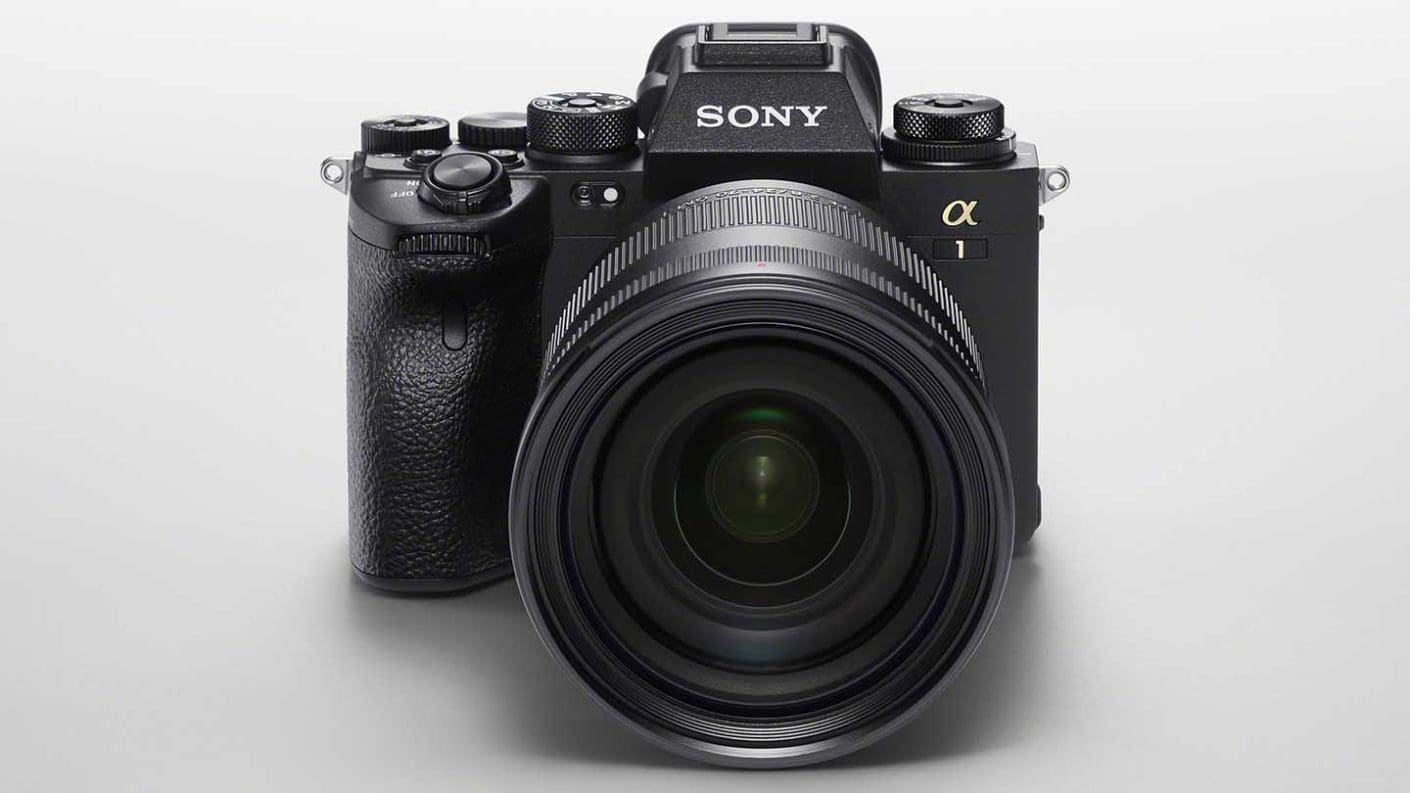
Specification
- Camera type: Full-frame mirrorless
- Announced: 26th January 2021
- Sensor: 50.1Mp full frame (35.9 x 24.0mm), Exmor RS CMOS sensor
- Lens mount: FE
- Sensitivity range: Stills: ISO 100-32000 (expandable to ISO 50 to ISO 102400) Video: ISO ISO 100-32000 (expandable to ISO 100-12800)
- Still Image format: Jpeg, HEIF, raw (Sony ARW 4.0)
- Video format & compression: XAVC S: MPEG-4 AVC/H.264, XAVC HS: MPEG-H HEVC/H.265
- 8K Video (XAVC HS): 7680 x 4320 (4:2:0, 10bit, NTSC) (Approx.): 30p(400Mbps / 200 Mbps), 24p(400Mbps / 200 Mbps), 7680 x 4320 (4:2:0, 10bit, PAL) (Approx.): 25p(400Mbps / 200 Mbps)
- 4K Video (XAVC HS): 3840 x 2160 (4:2:0, 10bit, NTSC) (Approx.): 120p (200Mbps), 60p (150Mbps / 75Mbps / 45Mbps), 24p (100Mbps / 50Mbps / 30Mbps); 3840 x 2160 (4:2:0, 10bit, PAL) (Approx.): 100p (200Mbps), 50p (150Mbps / 75Mbps / 45Mbps); 3840 x 2160 (4:2:2, 10bit, NTSC) (Approx.): 120p (280Mbps), 60p (200Mbps / 100Mbps), 24p (100Mbps / 50Mbps); 3840 x 2160 (4:2:2, 10bit, PAL) (Approx.): 100p (280Mbps), 50p (200Mbps / 100Mbps)
- 4K Video (XAVC S): 3840 x 2160 (4:2:0, 8bit, NTSC) (Approx.): 120p (200Mbps), 60p (150Mbps), 30p (100Mbps / 60Mbps), 24p (100Mbps / 60Mbps); 3840 x 2160 (4:2:0, 8bit, PAL) (Approx.): 100p (200Mbps), 50p (150Mbps), 25p (100Mbps / 60Mbps); 3840 x 2160 (4:2:2, 10bit, NTSC) (Approx.): 120p (280Mbps), 60p (200Mbps), 30p (140Mbps), 24p (100Mbps); 3840 x 2160 (4:2:2, 10bit, PAL) (Approx.): 100p (280Mbps), 50p (200Mbps), 25p (140Mbps)
- 4K Video (XAVC S-I): 3840 x 2160 (4:2:2, 10bit, NTSC) (Approx.): 60p (600Mbps), 30p (300Mbps), 24p (240Mbps); 3840 x 2160 (4:2:2, 10bit, PAL) (Approx.): 50p (500Mbps), 25p (250Mbps)
- Movie functions: Audio Level Display, Audio Rec Level, PAL/NTSC Selector, Proxy Recording (1280 x 720 (6Mbps), 1920 x 1080(9Mbps), 1920 x 1080(16Mbps)), TC/UB, Auto Slow Shutter, Gamma Disp. Assist, raw output(HDMI)
- Autofocus system: Hybrid AF with 759 phase detection points and 425 contrast detection points, Still images: Human (Right/Left Eye Select) / Animal (Right/Left Eye Select) / Bird, Movie: Human (Right/Left Eye Select), sensitive down to -4EV
- Maximum continuous shooting rate: Mechanical shutter: 10fps, Electronic shutter 30fps
- Viewfinder: 0.64-inch 9,437,184-dot EVF with 100% coverage and up to 0.9x magnification. It also offers 0.90x viewfinder magnification, 41° diagonal field of view with 25mm-high eyepoint
- Screen: 3-inch 1,440,000-dot tilting touchscreen
- Stills shutter speed range: Mechanical shutter: 1/8000-30sec plus Bulb, Electronic shutter: 1/32000-30sec plus Bulb
- Max flash sync speed (full-frame): Mechanical shutter: 1/400 sec, Electronic shutter: 1/200 sec
- Image stabilisation: 5-axis giving up to 5.5EV compensation
- Storage: Dual SD/SDHC/SDXC (UHS-I/II) & CFexpress Type A slots
- Connection ports: Sync, 3.5mm headphone, 3.5mm mic, LAN
- Battery: NP-FZ100 rechargeable Li-ion battery giving 400 shots with the viewfinder or 530 with the screen
- Dimensions (WxHxD): 128.9 x 96.9 x 80.8mm / 5 1/8 x 3 7/8 x 3 1/4 inches
- Weight (including battery & memory card): 737g / 1 lb 10.0 oz
The Alpha A1 is Sony’s most advanced camera to date, it combines a high-resolution full-frame sensor with high-speed performance. It features a new 50.1Mp full-frame stacked Exmor RS image sensor and can perform up to 120 AF/AE calculations per second.
Thanks to its impressive processing power, the Sony A1 can shoot at up to 30fps (frames per second) while its large buffer allows for sequences of up to 155 full-frame compressed RAW images or 165 full-frame JPEGs to be shot at that rate.
In addition to improved Real-time Eye AF for humans and animals, the Alpha 1 uses high-level subject recognition technology for Real-time Eye AF for birds. Algorithms also maintain the AF tracking if a sitting bird takes off or the framing changes.
The Sony A1 is the first Sony Alpha series camera to feature 8K 30p 10-bit 4:2:0 XAVC HS video recording. It’s also capable of shooting 4K 120p / 60p 10-bit 4:2:2 video and offers S-Cinetone colour. It uses 8.6K oversampling for enhanced resolution and, naturally, the 8K footage can be used for 4K editing during post-production.
The Sony A 1 has a 9.44 million dot OLED Quad-XGA electronic viewfinder, with a refresh rate of up to 240 fps, ensuring no blackout, delivering the highest resolution in its class. In addition, there’s a 3-inch 1,440,000-dot tilting touchscreen that features the revised menu arrangement and more extensive touch-control that was first seen in the Sony A7S III.
In case a resolution of 50Mp isn’t enough, the Sony A1 has Sony’s Pixel Shift Multi Shooting mode onboard to enables 16 full-resolution images to be composited.
You can order the Sony A1 from Wex Photo Video and Park Cameras in the UK and Adorama or B&H Photo Video in the USA. You can also find the latest Sony A1 offers at Amazon UK and Amazon US.
£6500
$6500For
- Excellent combination of speed and resolution
- Great range of video features including 8K video
- Superb electronic viewfinder
Against
- It takes a while to figure out the optimum settings
- Underwhelming screen specification
- Manual switching between the Eye AF subjects
Nikon D850
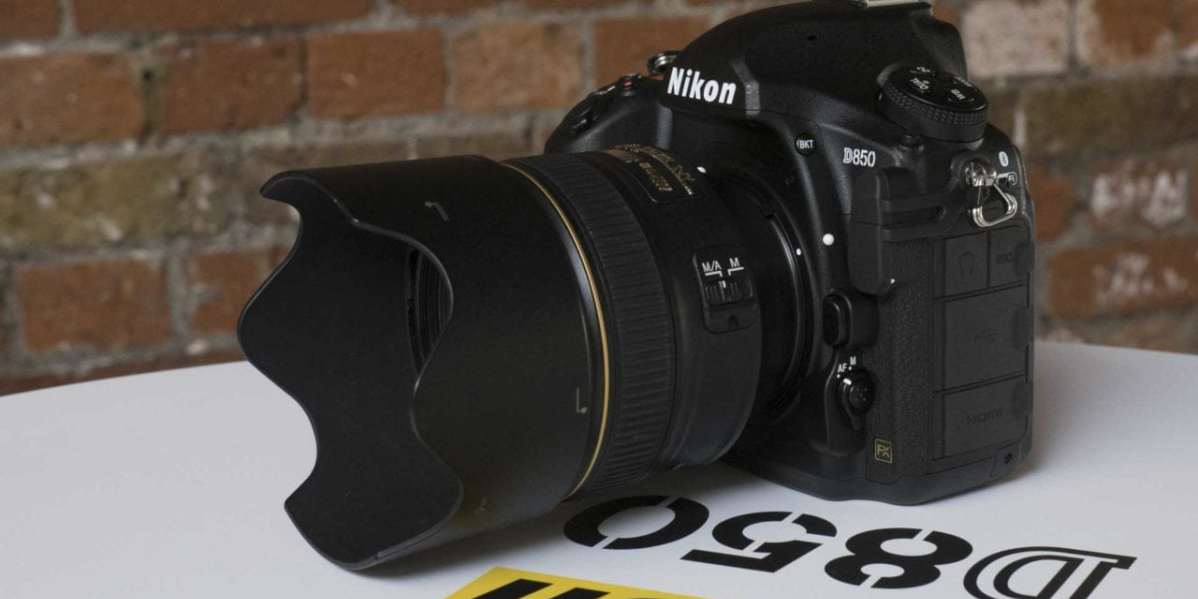
Specification
- Camera type: Full-frame (FX) DSLR
- Announced: 24th August 2017
- Lens mount: Nikon F
- Sensor: 45.7Mp full-frame (35.9 x 23.9mm) backside-illuminated CMOS
- Maximum continuous shooting rate: 7fps as standard, 9fps with the optional MB-D18 Multi-Power Battery Pack for up to 51 14-bit lossless compressed raw files or 170 12-bit lossless compressed raw files
- Autofocus system: Viewfinder: Multi-CAM 20K autofocus sensor 153 focus points (including 99 cross-type sensors and 15 sensors that support f/8), of which 55 (35 cross-type sensors and 9 f/8 sensors) are available for selection, Live view: Contrast detection
- Viewfinder: Optical pentaprism type
- Screen: Tilting, touch-sensitive 3.2-inch TFT LCD with 2,359,000 dots
- Dimensions: 146×124×78.5mm / 5.8×4.9×3.1inches
- Weight: 1,005g / 2lb 3.5oz with battery and XQD memory card but without body cap, 915g /2lb 0.3oz camera body only
Possibly the most popular camera of 2017, the Nikon D850 is a great all-rounder which offers both enthusiasts and professionals a fantastic performance. The AF system was inherited from the then top-of-the-line D5, while the 45.7 million pixel sensor allows for some superb detail reproduction.
The optical viewfinder is the largest ever found on a Nikon DSLR, while the tilting touch-sensitive screen comes in useful for certain subjects. Silent shooting is enabled when you use Live View, which is great for discreet shots where you need to be quiet.
Although the D850 is not primarily aimed at sports and action photographers, it’s 7fps maximum shooting rate gives you something to work with – and you can boost that to an even more usable 9fps by adding an optional battery grip. While the Sony A9 may have the D850 beaten in some key areas (such as frame rate), for professionals working in the field, the D850’s battery life is so much more workable.
Overall the D850 is a fantastically versatile DSLR that produces high-quality images, while being more affordable than the professional-level D6.
Find the latest deals on the Nikon D850 at Amazon UK and Amazon US.
